Abstract
Gross deterioration of cycloserine during transit and storage in the tropics is reported from the Tuberculosis Chemotherapy Centre, Madras. Laboratory experiments suggest that high humidity, rather than high temperature, is the main cause of the deterioration. Further investigations undertaken at the Centre indicate that deterioration can be prevented by storing the drug in tightly closed glass bottles in an air-conditioned room (18°C); if such facilities are not available, and the drug has to be stored at ambient temperature and humidity, the use of air-tight polyethylene bottles will serve to delay the deterioration. The findings also suggest that, when cycloserine is dispensed to patients, individual doses should be heat-sealed in polyethylene strips and that not more than a week's supply should be given at any one time. The authors discuss various measures that could be employed by manufacturers and by shipping and clearing agents to minimize the possibility of deterioration.
Full text
PDF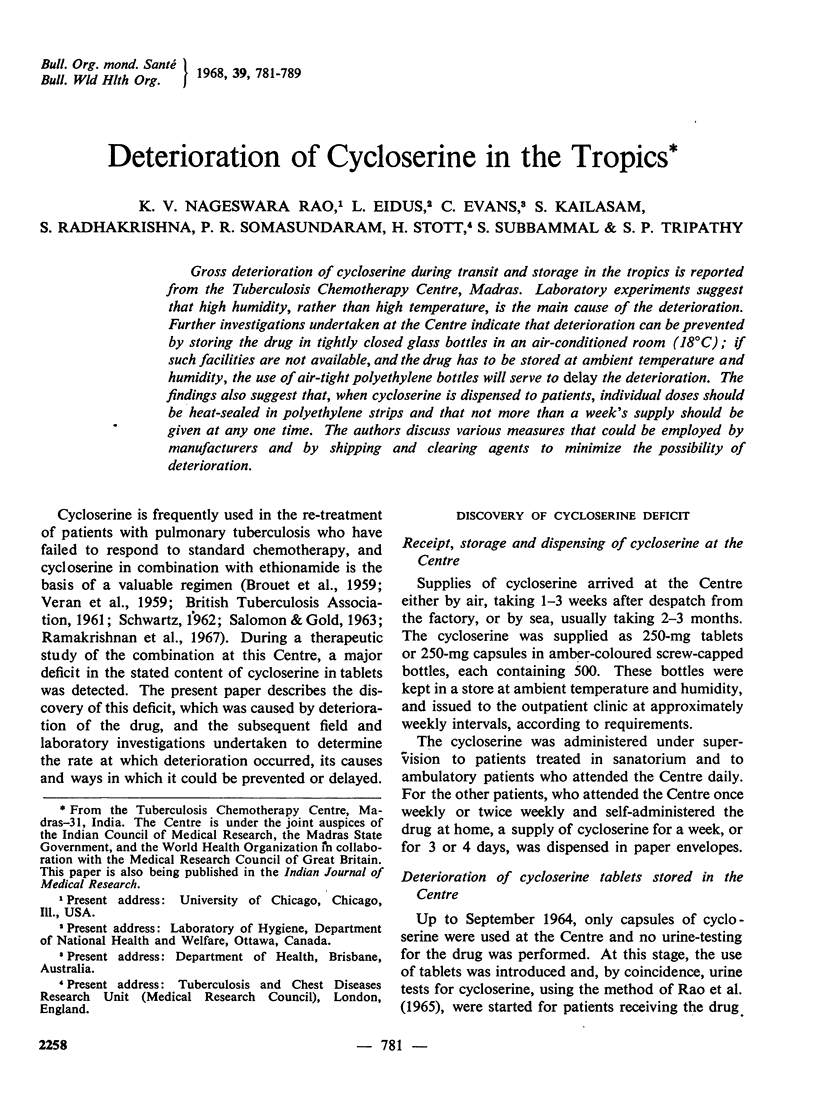
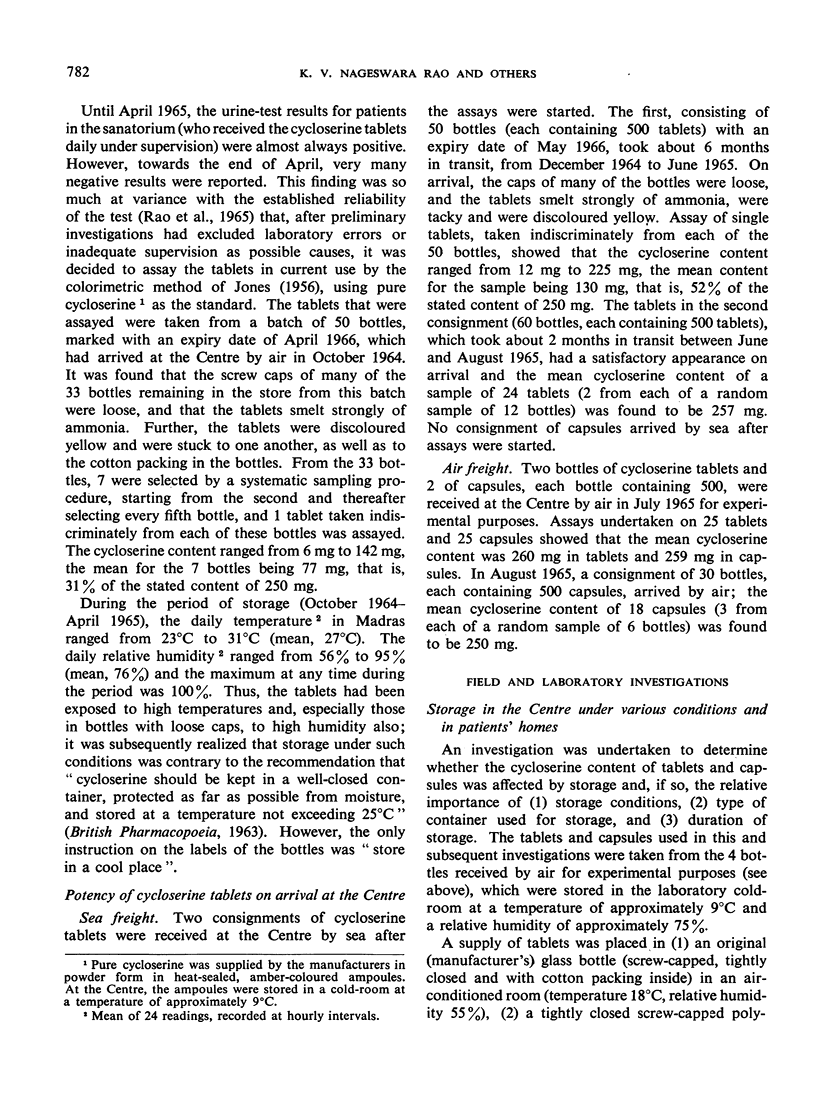
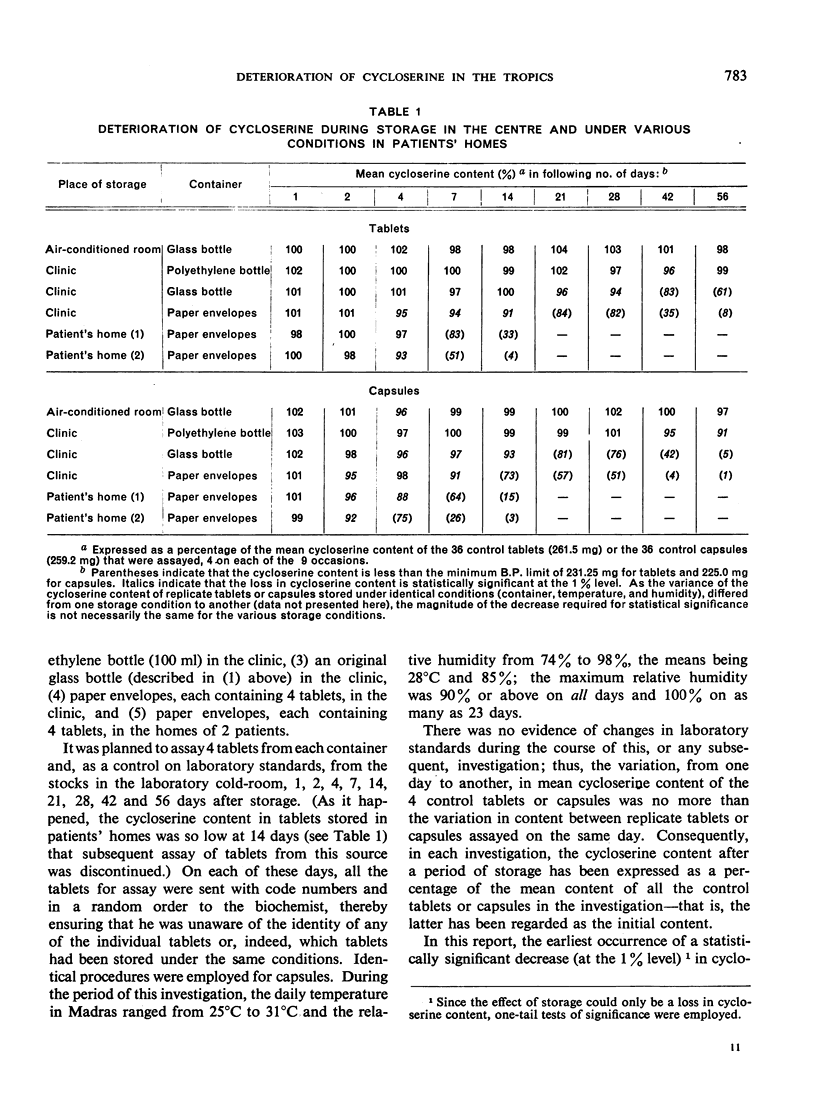
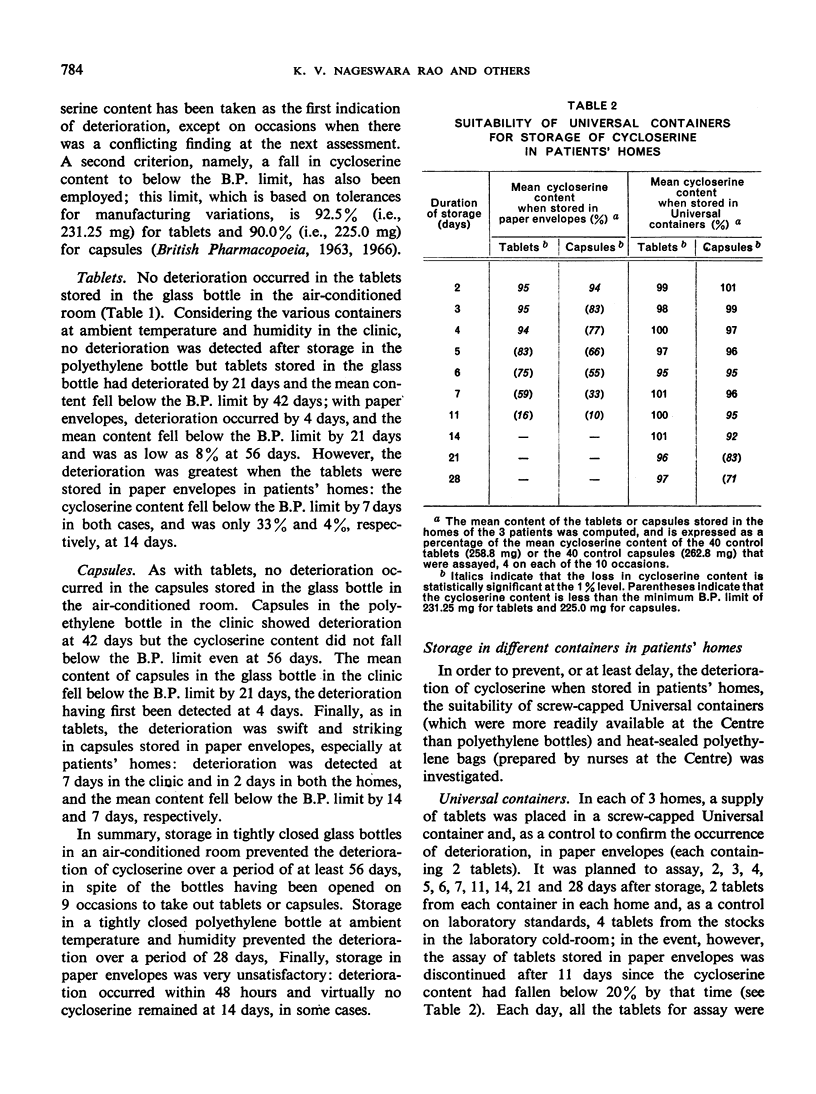
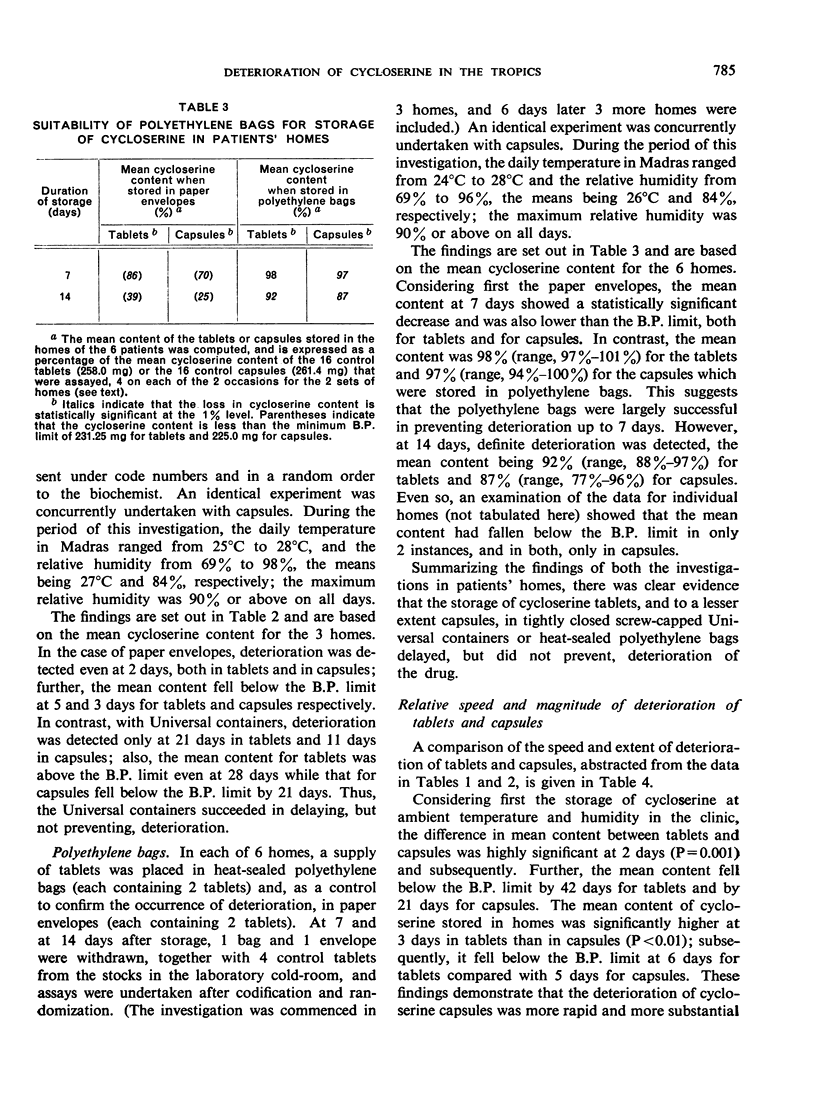
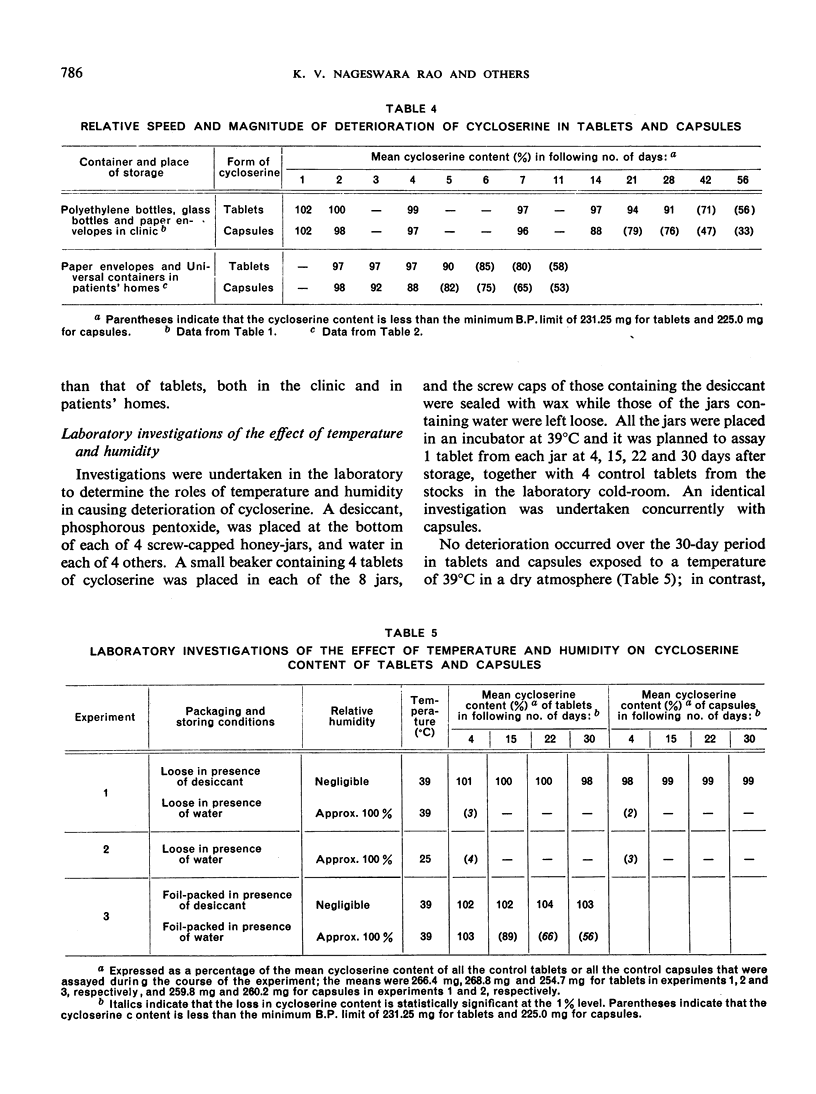
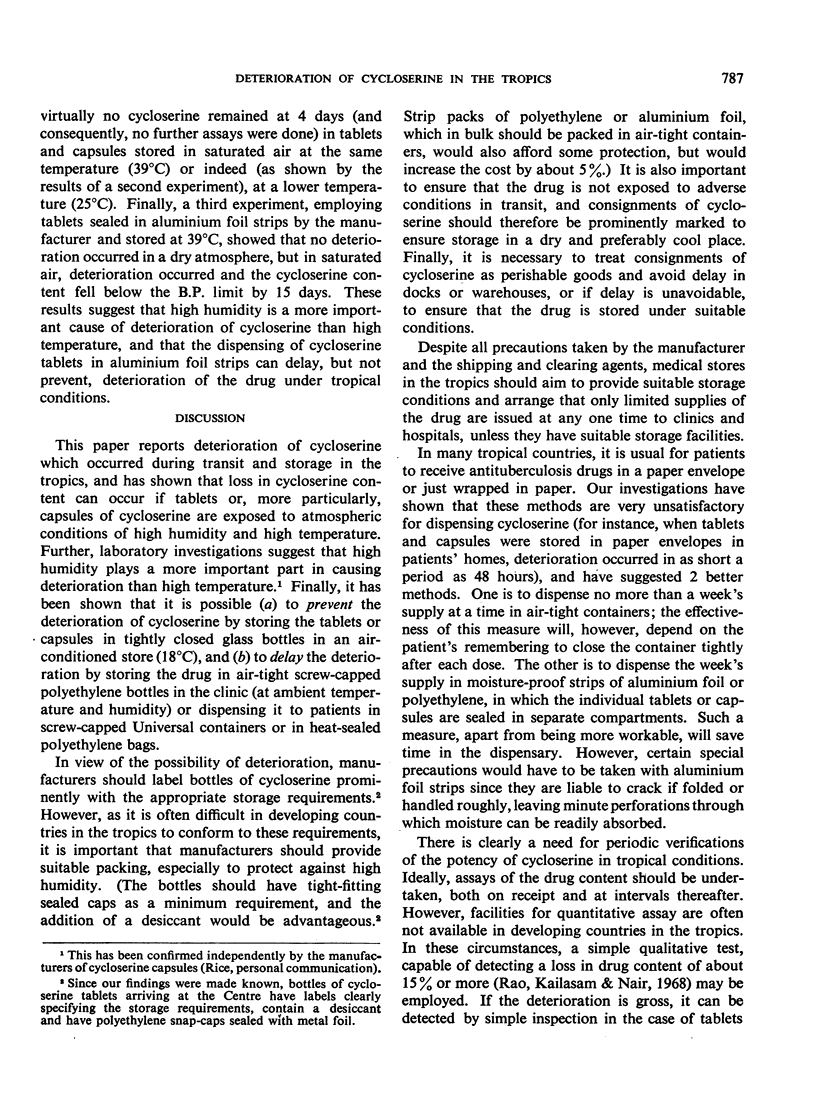
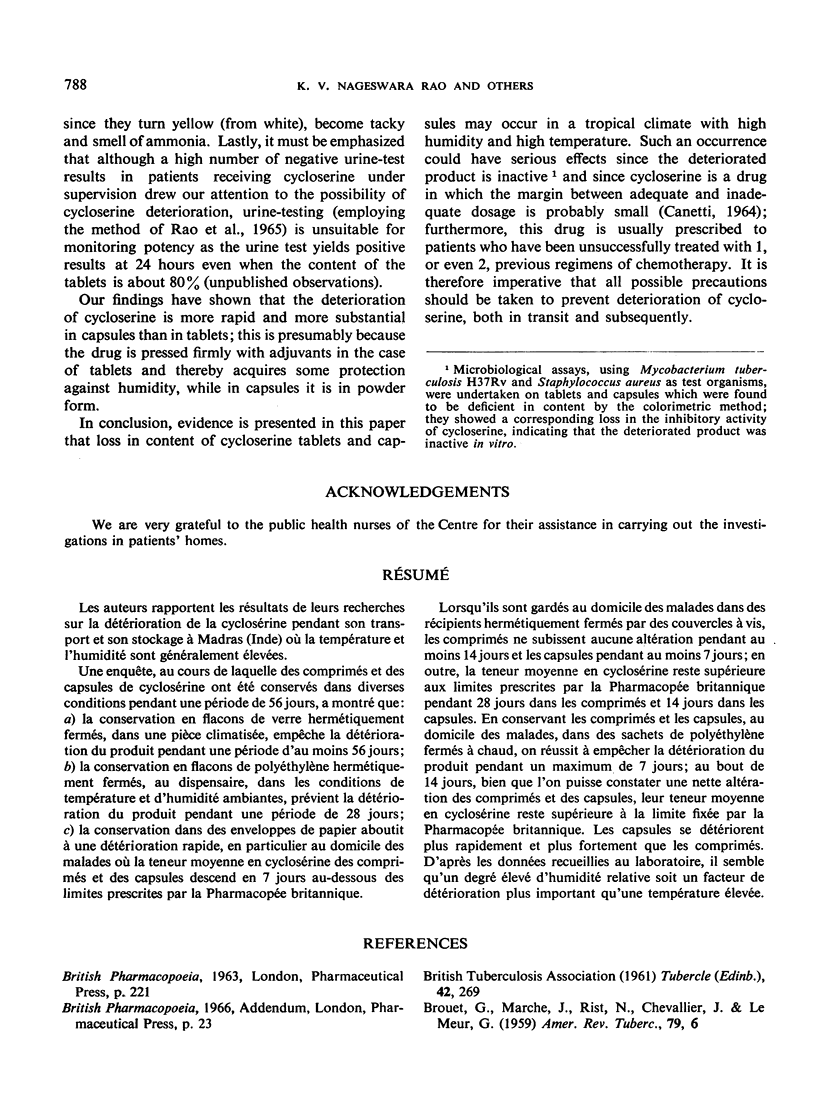
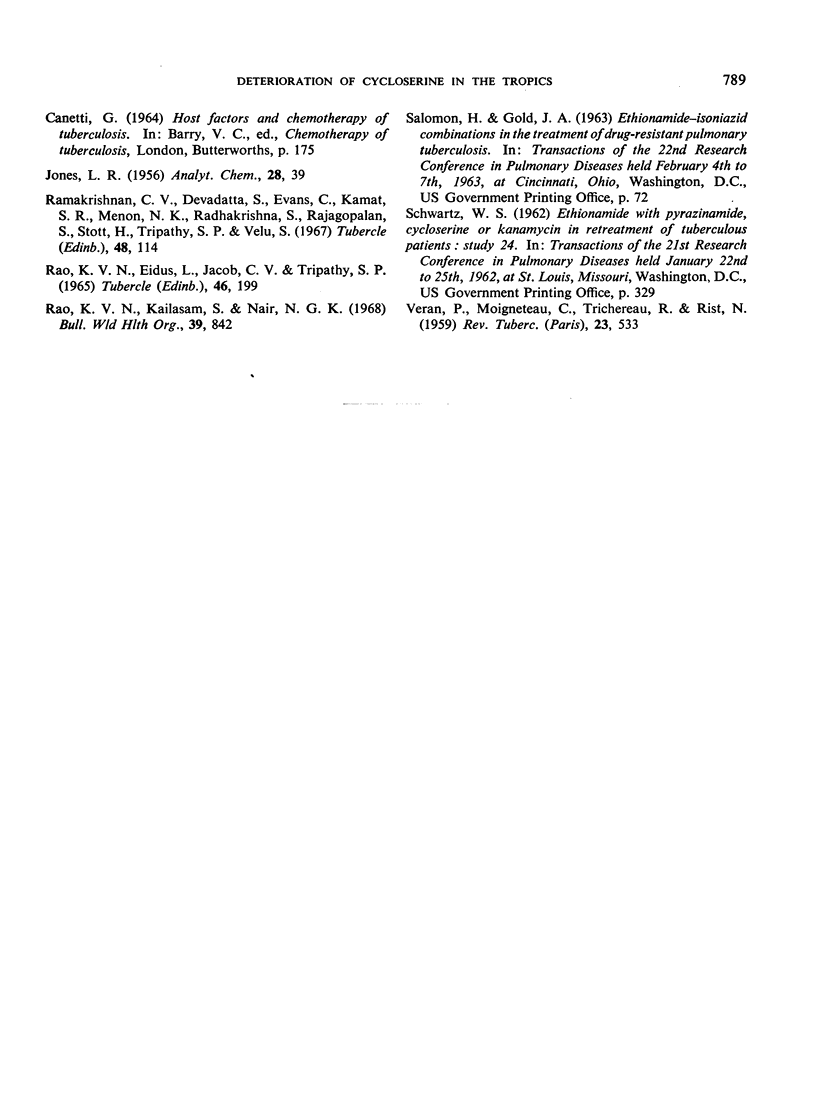
Selected References
These references are in PubMed. This may not be the complete list of references from this article.
- BROUET G., MARCHE J., RIST N., CHEVALLIER J., LEMEUR G. Observations on the antituberculous effectiveness of alpha-ethyl-thioisonicotinamide in tuberculosis in humans. Am Rev Tuberc. 1959 Jan;79(1):6–18. doi: 10.1164/artpd.1959.79.1.6. [DOI] [PubMed] [Google Scholar]
- RAO K. V., EIDUS L., JACOB C. V., TRIPATHY S. P. A SIMPLE TEST FOR THE DETECTION OF PYRAZINAMIDE AND CYCLOSERINE IN URINE. Tubercle. 1965 Jun;46:199–205. doi: 10.1016/s0041-3879(65)80063-0. [DOI] [PubMed] [Google Scholar]
- Ramakrishnan C. V., Devadatta S., Evans C., Kamat S. R., Menon N. K., Radhakrishna S., Rajagopalan S., Stott H., Tripathy S. P., Velu S. Cycloserine plus ethionamide in the treatment of patients excreting isoniazid-resistant tubercle bacilli following previous chemotherapy. Tubercle. 1967 Jun;48(2):114–127. doi: 10.1016/s0041-3879(67)80006-0. [DOI] [PubMed] [Google Scholar]
- Rao K. V., Kailasam S., Nair N. G. A simple qualitative test for deterioration of cycloserine. Bull World Health Organ. 1968;39(5):842–844. [PMC free article] [PubMed] [Google Scholar]
- VERAN P., MOIGNETEAU C., TRICHEREAU R., RIST N., TOSTIVINT Y., GUENEGO A., BLAIN C. [Th-1314 or the thioamide of alpha-ethylisonicotinic acid in the treatment of cavitary tuberculosis]. Rev Tuberc Pneumol (Paris) 1959 May-Jun;23:533–569. [PubMed] [Google Scholar]


